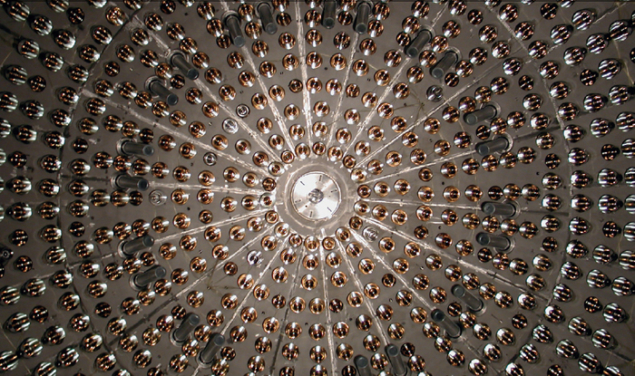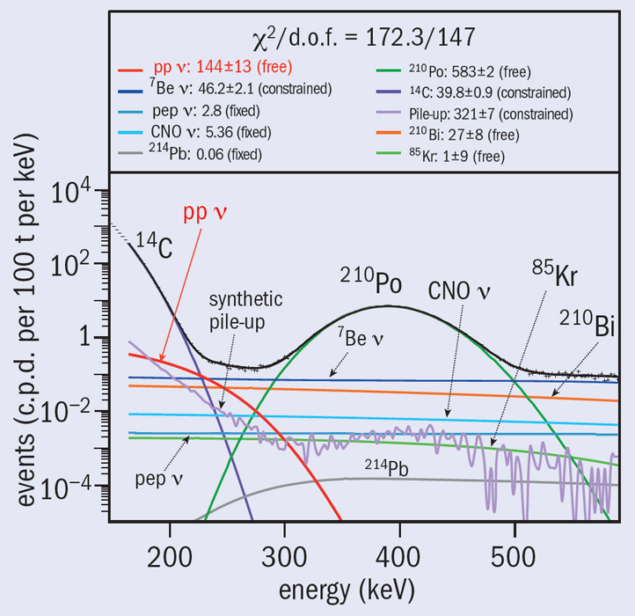
Image credit: Borexino Collaboration.
The Borexino experiment at the INFN Gran Sasso National Laboratories has measured the energy of the Sun in real time, showing for the first time that the energy released today at its centre is exactly the same as that produced 100,000 years ago. This has been possible through the experiment’s direct detection of the low-energy neutrinos produced in the initial nuclear reactions occurring in the solar core.
Previous measurements of solar energy have always been made on the radiation (photons) that currently illuminate and heat the Earth. The energy of this radiation originates in the Sun’s nuclear reactions, but, on average, has taken 100,000 years to travel through the dense solar matter and reach the surface. Neutrinos produced by the same nuclear reactions, on the other hand, take only a few seconds to escape from the Sun before making the eight-minute journey to Earth. The comparison between the neutrino measurement now published by the Borexino collaboration and the previous measurements on the emission of radiant energy from the Sun shows that solar activity has not changed during the past 100,000 years.

Image credit: Borexino 2014.
Borexino is an ultra-sensitive liquid-scintillator detector designed to detect low-energy neutrino events in real time at a high rate, in contrast to earlier radioachemical experiments such as Homestake, GALLEX and SAGE. The experiment previously has focussed on measurements of neutrinos from 7Be and 8B – nuclei formed in certain branches of the principal chain of reactions that converts hydrogen to helium at the heart of the Sun. The 7Be neutrinos constitute only 7% of the neutrino flux from the Sun and the 8B neutrinos even less, but they have been key to the discovery and study of the phenomenon of neutrino oscillations, most recently by Borexino. In contrast in this latest work, Borexino has focused on the neutrinos from the fusion of two hydrogen nuclei (protons) to form deuterium – the seed reaction of the nuclear-fusion cycle that produces about 99% of the solar power, some 3.84 × 1033 ergs/s.
The difficulty of the new measurement lies in the extremely low energy of these so-called pp neutrinos, which is smaller than that of the others emitted by the Sun. The capability to do this successfully makes the Borexino detector unique, and has also allowed the study of neutrinos produced by the Earth.
The Borexino experiment is the result of a collaboration between European countries (Italy, Germany, France, Poland), the US and Russia, and it will take data for at least another four years, improving the accuracy of measurements already made and addressing others of great importance, for both particle physics as well as astrophysics.
Further reading
Borexino Collaboration 2014 Nature 512 383.








